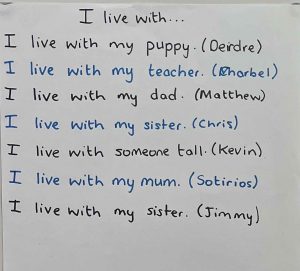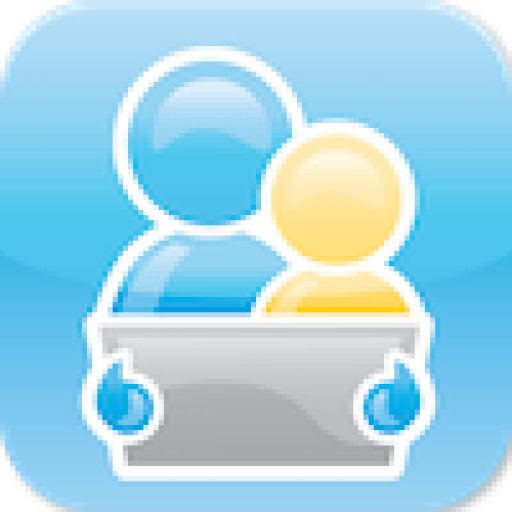Recently I have been talking a lot to teachers about doing group writing in their classroom. As teachers implement a balanced literacy program in their classrooms, it is important that writing happens daily - and that writing happens for real reasons. Writing is one of the most complex tasks that we ask students to do. They need to think of an idea. Then they need to come up with the language and words to write about the idea. Once they've done that, they need to think how to spell those words and then how they are going to write or select the letters that make up those words. So much to do and so many things to co-ordinate for emergent and early writers.

Predictable Chart Writing (Cunningham, 1979) is one way that a teacher can focus on the language selection component of writing, allowing students to develop skills in that area. It is particularly suitable for students who use Augmentative and Alternative Communication (AAC) as it helps them to understand a lot about early writing, sentence structure and language selection in writing. It also allows all writers to be very successful - helping to build their self-confidence and image of themselves as a writer.
Predictable Chart Writing is done as a group, rather than as individuals, and is traditionally done over 5 days. It was initially developed by Dr Cunningham as a technique for helping all children, irrespective of their language skills, to be successful in the writing process. In the predictable chart process, the teacher provides a model sentence or sentence starter, to which the students contribute one or two (or more) words. Each student makes the sentence as complex or as simple as they can.
In the example above, the class of secondary aged students has been doing a unit on "Food for Life". Their guided reading text for the week has been "Introduction to Nutrition" by Kula868 downloaded from Tar Heel Reader. The guided reading purpose was "read to learn a food group that can be eaten daily" - and their teacher has then extended this across into writing. Creating a book from a template in Clicker 6, she used a sentence frame "I can eat ______ every day." Coming up with the language to complete this sentence is a complex task for some of her students. They need to remember which food groups can be eaten every day (lean meats, bread and grains, dairy products, fruits and vegetables) and then they need to think of a food that is in one of those groups.
By Friday, the class wrote the following story.
The teacher created the book in Clicker 6 on the interactive whiteboard. She added a page as each student contributed their item, using pictures from the Crick picture library provided with Clicker 6. As she did this, she also created a great resource for self-selected reading as part of this process. Her class, who are mostly emergent readers and writers, are very proud of their completed book and feel like they are successful writers. They love choosing the book in their self-selected reading block and can read this book quite independently. Two of her students use AAC - but of course you cannot tell which ones from the product of this great lesson! (And, if you are interested, click here to download the finished book in Clicker 6.)
If you are working with emergent or early writers please give Predictable Chart Writing a go. It is suitable for all students. It is a fabulous multi-level activity that each students completes at their own level - and it is lots of fun!
If you are interested in learning more you can access a great resource on using Predictable Chart Writing from the Centre for Literacy and Disability Studies.
And there are lots and lots more if you just Google "Predictable Chart Writing".


Robin Parker
Jane
Carole
Jane
nicole
Jane
Jeanne Tuthill
susan berkowitz
Jane
Brenda Smith
Pingback: Comprehensive Literacy Instruction: Meeting the Instructional Needs of ALL Students in our Classrooms | Jane Farrall Consulting
Pingback: Engaging students through Science! | teachtynanteach
Pingback: Tip of the Month – October 2017: Emergent Literacy – The TalkLink Trust
LW
jane